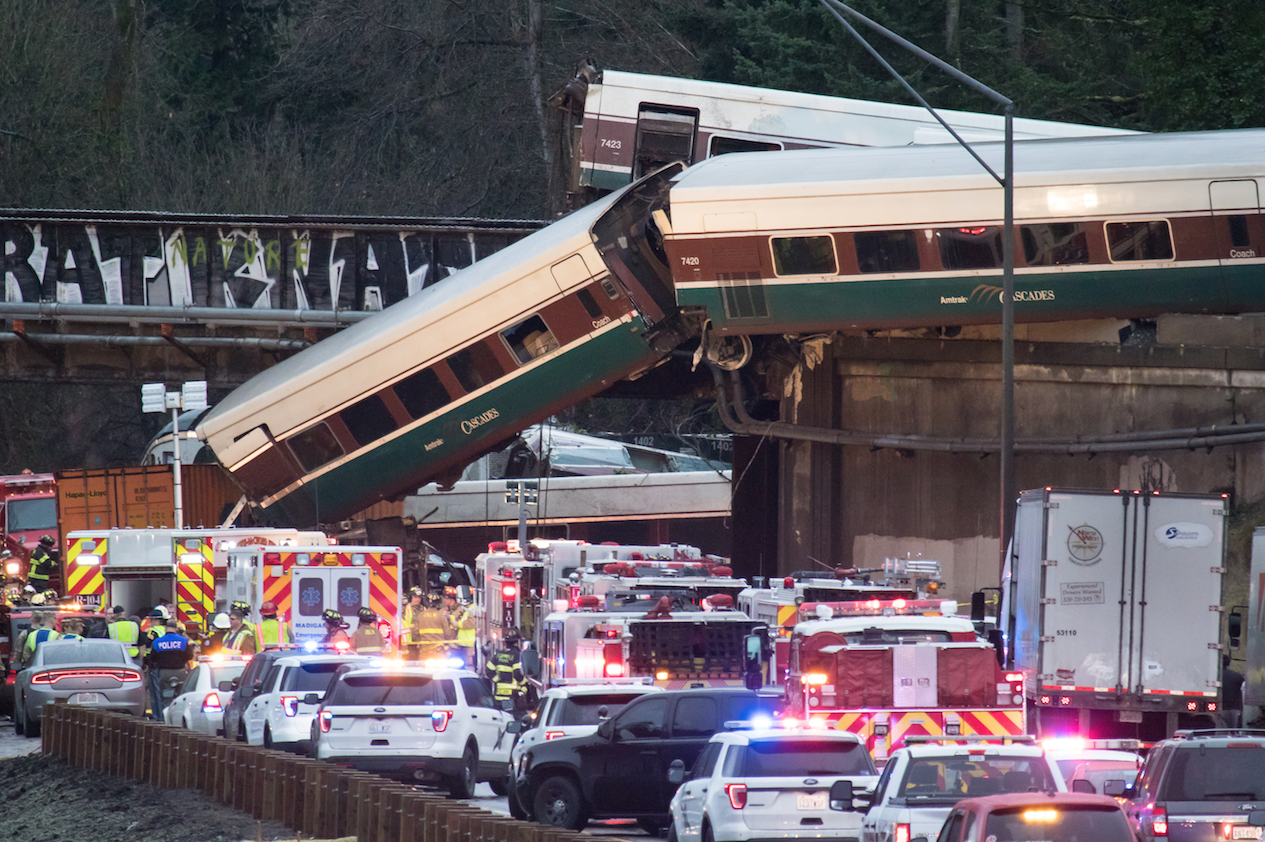FRA said the grant was made through its Federal-State Partnership for State of Good Repair program. The Washington grant was one of 10 announced this week, totaling $272 million.
The state department said the train sets will be purchased through Amtrak’s 2019-2020 national equipment replacement contract.
“By participating in this national procurement process with other states that sponsor passenger service, [the state transportation department] will be able to leverage the buying power of both Amtrak and other states,” the department said.
Under that contract, one bidder will be selected to provide various configurations depending on what each state asks for, department representative Janet Matkin says.
FRA said the new passenger cars “will provide flexible train car capacity, reduce infrastructure lifecycle costs for the Amtrak Cascades fleet, and improve onboard amenities.”
The $37.5-million grant will pay for 50% of the cost of replacing the trainsets, Matkin said. The balance will come from insurance proceeds from the trainset lost in the derailment, and from state funding.
The replacement trainsets will be delivered in the mid-2020s. In the meantime, Amtrak is looking for temporary equipment to replace Talgo 6 trainsets currently in service.
Amtrak Cascades service operates on the north-south corridor from Vancouver, B.C., through Seattle and Portland to Eugene, Ore. The service operated with seven trainsets: three Talgo 6 sets owned by the state of Washington, two Talgo 6 sets owned by Amtrak and two later-model Talgo Series 8 trainsets owned by the state of Oregon. The Washington and Amtrak Talgo Series 6 trainsets were delivered in 1998.
The Talgo 6 came in for pointed criticism from the National Transportation Safety Board in its investigation of the trainset involved in the crash, saying the trainset involved “did not meet current crashworthiness standards and was only permitted to operate through a grandfathering agreement with the Federal Railroad Administration, was structurally vulnerable to high-energy derailments or collisions.”
Among its recommendations to Washington state: “Discontinue the use of the Talgo Series VI trainsets as soon as possible and replace them with passenger railroad equipment that meet all current United States safety requirements.”
Talgo has disputed the contention that the Talgo 6s are unsafe, noting (in a response to questions earlier this year the equipment “has been in service every day for 21 years with a superior safety and reliability record…. Series VI equipment that is even older than the WSDOT and Amtrak owned equipment is running all over the world.”
Also lost in the derailment was a Siemens Charger locomotive. Matkin said a new Charger locomotive will be delivered by September 2020 as a replacement.
The derailment occurred near DuPont, Wash., between Tacoma and Olympia, Wash., on a line known as the Point Defiance Bypass, when an Amtrak Cascades train took a curve with a posted speed limit of 30 mph at nearly 80 mph. The bypass, to be used by Amtrak’s Coast Starlight as well as the Cascades service, is an inland route designed to reduce congestion on the water-level route used by both BNSF Railway and Union Pacific. Opening the line was to allow adding more daily trains to the Cascades service.
Amtrak Cascades 501, the train that derailed, was the first revenue service on the line. Immediately afterward, trains were shifted back to the existing route. Positive train control, which wasn’t operating on the line at the time of the derailment, is now ready, but as of now no date has been set for reopening the Point Defiance Bypass.















I have been by the crash site many times. The issue is obviously not the equipment, it is the sharp curve and then the bridge over I5. The Talgos held up amazingly well. Anyway, it is a shame to see the line past Lakewood (end of the Sounder service from Seattle) sitting idle. What is the holdup now that PTC is in place? Who could get this line in use? It is a huge win over the scenic Tacoma peninsula line.
And so the feds have millions to dole out to a few chosen transit agencies. I’d be very curious to know the criteria used to decide who gets on the gravy train, and who is left at the station. Maybe California could manage to bust up one of its Surfliner sets and get the feds to pay for half of the replacement cost.
“…delivered in the mid 20s.” Really! Does it actually take 6 years or so to get these trains into service?
If I lived close enough, I would ride them while I can. Living in the Midwest, they will probably be gone before I get the opportunity.
This was unique among rail crashes is the violence of the displacement of the cars.
I don’t know that any rail vehicle or any other passenger-carrying mode of transport was designed to protect passengers when falling off a bridge. Surely I’m no expert. Having said that I’ve not known of any competent study proving that any other railcar would have more successfully stayed in one piece.
With no seat belts or air bags, it’s a miracle the death toll was as small as it was.
Criticizing a Talgo Series VI that went off the rails rated for 30mph at 80mph seems a bit redundant. I am amazed it survived what it did. FRA can only blame itself for the grandfather clause.
As for now, it will be interesting to see what comes up in the bidding process.